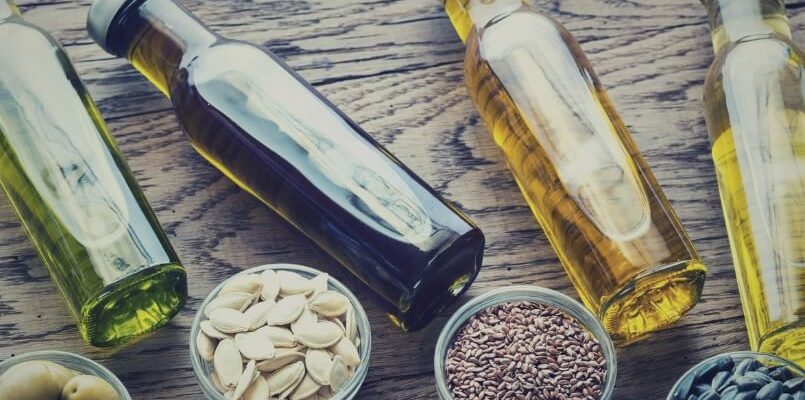What are the benefits and harms of fats for human health?

In this article, we will look at the benefits and harms of fats for the body. Read on!
“Nature has come up with a very clever idea: all nutrients are essentially composed of glucose molecules, amino acids, fats. All nutrients entering our body are consumed from living matter. “
Julia Anders
Although many are convinced that you need to consume as little fat as possible, this is a misconception . Most metabolic processes in the body take place with the participation of fats.
- Fats are the main source of energy.
- They surround all fragile organs with a fatty membrane, and protect them from the negative effects of the external environment, from various injuries and concussions.
- Fats prevent the body from freezing quickly.
- The brain is 60% fat, so brain cells need a constant supply of them.
- Fats are needed for the functioning of the reproductive system.
- Fats contribute to the firmness and elasticity of the skin.
- With the participation of fats, many vital hormones and vitamin D are synthesized.
The benefits of fats are beyond doubt, the main thing is to know which fat is better, how much fat you need to eat, and where the necessary fats are contained.
Fats are divided into three main groups – saturated, unsaturated, and trans fats.
Content
The benefits and harms of saturated fat
Saturated fat is fat that has a number of beneficial properties that a person needs to keep the thyroid gland working properly. They also protect against hypothermia, and food tastes better with them.
Here are the 5 most important benefits of saturated fat:
1. Brain health
Most of the brain is made of fat. Strange, but true. Fats are needed by the brain to grow, regenerate and maintain health.
2. Cardiovascular health
Saturated fats are good for the heart and circulatory system. For example, lauric and stearic acids, found in saturated fat, help regulate cholesterol levels.
In addition, dietary saturated fat reduces levels of lipoprotein, a known risk factor for cardiovascular disease.
3. Bone health
Saturated fat is essential for efficient absorption of calcium. Without them, bones will be weak.
4. Immune health
Without enough saturated fat, the ability of white blood cells to recognize and destroy foreign organisms such as viruses, bacteria, and fungi is reduced.

5. Health of the nervous system
Saturated fat is an “insulating coat” for the nervous system. When a person is lacking in saturated fat, they become more susceptible to various stimuli.
Where are saturated fats found?
Coconut oil, butter, herbal oil, ghee, natural animal fats, avocados, olives, nuts and seeds, etc.
However, depending on your unique metabolism, the amount of saturated fat that works for you may vary.
Let’s take a closer look at the most popular product – butter.
Although butter is considered a high-calorie food, it also has many health benefits. For example, there is vitamin A in the oil, which is necessary for good vision and skin elasticity; vitamin E – helps fight cancer and prevents the formation of wrinkles. But with an increased level of cholesterol in the blood, it is better to refuse butter.
There should be a measure in everything. Depending on the unique metabolism, the amount of saturated fat required for each person is individual.
Saturated fat rate is 7% of daily calories. Excessive consumption of saturated fat contributes to rapid weight gain and obesity, leading to the development of cardiovascular disease and atherosclerosis.
The benefits of unsaturated fats
Now let’s look at the benefits of unsaturated fat when consumed in food.
What foods contain healthy unsaturated fats?
1. Fish and seafood
The most valuable component in fish and seafood is Omega-3 fatty acids, which are beneficial for eyesight, the nervous system and the heart, normalize blood pressure, and save you from harmful cholesterol and cancer.
2. Vegetable oil
Sunflower and olive oils are rich in vitamin E and oleic acid, which maintain the beauty and youthfulness of the skin, prevent wrinkles and even cancer.

3. Nuts
Nuts can contain up to 70% unsaturated fat. In addition, nuts contain a lot of vitamins of groups B, A, E.
The body receives most of its calories from fats (any), so excess weight can appear not only from saturated, but also from unsaturated fats. The rate of unsaturated fats should be no more than 22% of the daily calorie content.
Harm of trans fats to the human body
Trans fats are obtained in the process of processing cheap vegetable oils into solid oils by hydrogenation. They do not bring any benefit, but only harm – they have a bad effect on the liver, increase the level of bad cholesterol, lead to the development of diabetes, tumors and obesity, and weaken the immune system.
With their excess in the body, polyunsaturated fatty acids are poorly absorbed. Therefore, trans fats in the diet should be less than 1% of the daily calorie content, and it is better to completely eliminate them.
What foods contain trans fats ?
1. Margarine and spread
There was a time when margarine and spreads were recommended to be used instead of butter because of its harmful effect on the heart and blood vessels. But then it turned out that, although margarine is made from vegetable oil, it causes the development of atherosclerosis and oncological diseases.
But not everything is so gloomy! Nowadays new technologies have made it possible to produce dietary margarine and spreads without trans fats. They are intended for people for whom butter is contraindicated for health reasons.
Therefore, read the labels – it should state that the product does not contain hydrogenated oils.
2. Confectionery
Cakes, pastries, cookies and candy can contain up to 40% trans fat. They also contain a lot of sugar, which is also bad for your figure and health.
3. Food from fast food restaurants – fast food
In fast food restaurants, trans fats are used in large quantities.
The benefits and harms of fats in fast food: What does one big mac do to the body ?https://www.youtube.com/embed/4sc5_Oubpkc
4. Milk and meat
As you know, milk contains up to 5% trans fats, and meat – up to 10%. These trans fats are a product of animal life – due to the special structure of the cow’s stomach, natural hydrogenation occurs in one of its four chambers. Therefore, there are trans fats in milk and meat.
And although these trans fats are of natural origin, in their composition they are absolutely identical to industrial ones, and have the same negative effect on the body.
What foods (mainly) contain trans fats: table
| Product | Saturated fat | Trans fats |
| Meat | from 3.3 to 21.5% | 2.78 to 9.52% |
| Milk | from 2.4 to 4% | 3.9 to 5.09% |
| Butter | from 81.5 to 83% | from 1.05 to 5.15% |
| Cheese | from 21.5 to 32% | from 3.54 to 5.66% |
Dairy trans fats are thought to be more dangerous because they combine saturated fat and cholesterol. The combination of these three components in a short time depletes the circulatory system, forms cholesterol plaques and neoplasms, and disrupts metabolism.
Therefore, it is recommended to use dairy products with a reduced proportion of milk fat or replacing it with polyunsaturated fatty acids.
To summarize, let’s say the benefits of fats for the human body are beyond question. However, not all fats are created equal. It is important to carefully monitor your diet.







